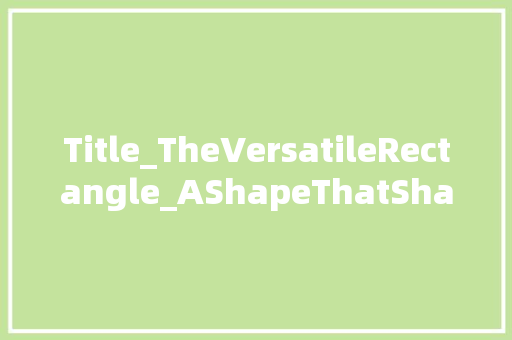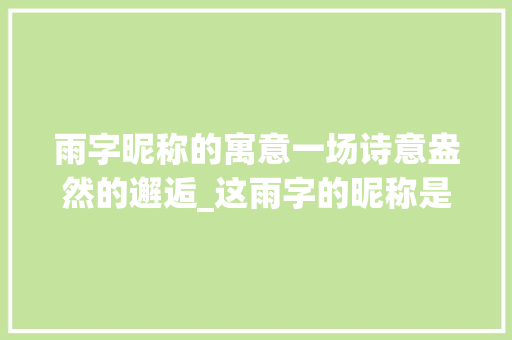Content:
Introduction:

The rectangle, a simple yet profound geometric shape, has been a staple in human civilization for centuries. Its symmetrical beauty and practical applications have made it a cornerstone of architecture, design, and everyday life. This article delves into the fascinating history, characteristics, and the myriad ways in which the rectangle has shaped our world.
I. The Evolution of the Rectangle
A. Ancient Origins
The rectangle has been a part of human culture since ancient times. Evidence of rectangles can be found in the architecture of ancient civilizations such as the Egyptians, Greeks, and Romans. These early rectangles were primarily used for practical purposes, such as constructing buildings and dividing land.
B. Renaissance and Beyond
During the Renaissance, the rectangle gained prominence in art and architecture. Artists like Leonardo da Vinci and architects like Filippo Brunelleschi utilized the rectangle to create balanced and harmonious compositions. This period marked the beginning of the rectangle's aesthetic appeal.
II. Characteristics of the Rectangle
A. Symmetry
One of the rectangle's most defining characteristics is its symmetry. The rectangle has two pairs of parallel sides and four right angles, which create a sense of balance and order. This symmetry is a fundamental aspect of human perception and has been used to create aesthetically pleasing structures and designs.
B. Versatility
The rectangle's versatility is unparalleled. It can be found in various forms, from the simple rectangular box to the complex geometric shapes that make up modern architecture. This adaptability has allowed the rectangle to be a universal building block in design and construction.
III. The Rectangle in Architecture
A. Ancient Architecture
Ancient structures such as the Pyramids of Giza and the Parthenon in Athens are prime examples of the rectangle's influence on architecture. These structures not only serve as practical buildings but also embody the rectangle's aesthetic appeal and symbolic significance.
B. Modern Architecture
In modern times, architects continue to use the rectangle to create iconic buildings. The Burj Khalifa in Dubai, for instance, is a testament to the rectangle's ability to create towering structures that defy gravity. The rectangle's simplicity and symmetry make it an ideal shape for creating visually stunning skyscrapers.
IV. The Rectangle in Design
A. Graphic Design
In graphic design, the rectangle is a fundamental element used to create layouts and compositions. Its symmetry and versatility make it an ideal choice for creating balanced and visually appealing designs. The rectangle is often used to frame images, create space, and guide the viewer's eye through a composition.
B. Industrial Design
The rectangle is also a popular choice in industrial design. From the simple shape of a laptop to the complex design of a car, the rectangle is used to create products that are both functional and aesthetically pleasing.
V. The Rectangle in Everyday Life
A. Furniture
The rectangle is a common shape in furniture design. From the classic wooden desk to the sleek modern sofa, the rectangle provides a practical and aesthetically pleasing solution for seating and storage.
B. Packaging
The rectangle is a popular choice for packaging due to its practicality and versatility. From cereal boxes to gift wrapping, the rectangle is used to create packaging that is both functional and visually appealing.
VI. Conclusion
The rectangle, a seemingly simple geometric shape, has had a profound impact on human civilization. Its symmetrical beauty, practical applications, and versatility have made it an essential element in architecture, design, and everyday life. As we continue to innovate and evolve, the rectangle will undoubtedly continue to shape our world in new and exciting ways.
References:
- Smith, J. (2010). \









